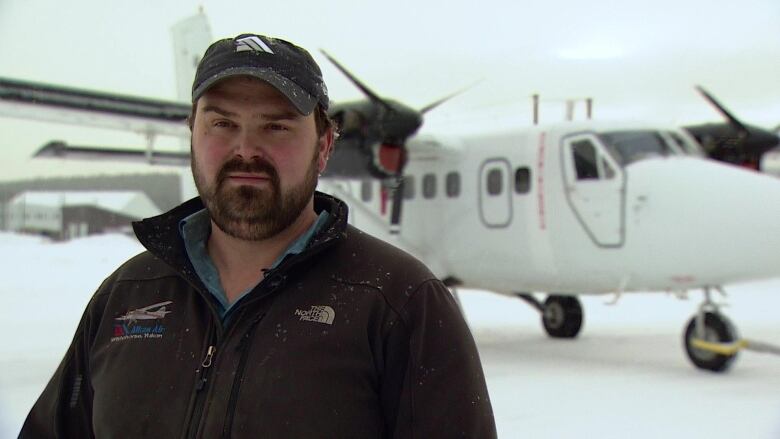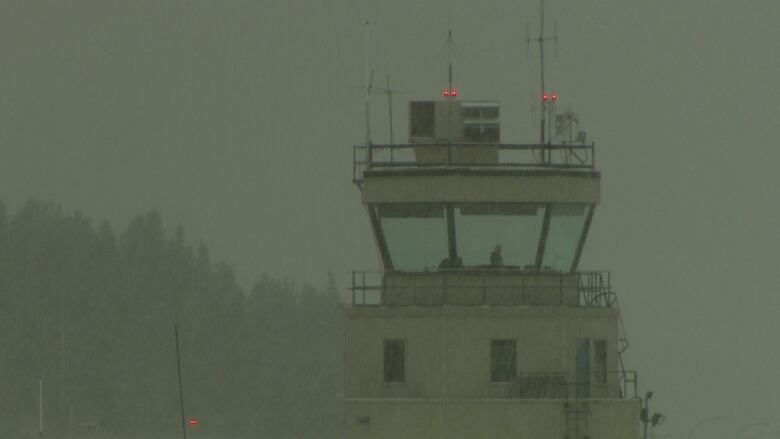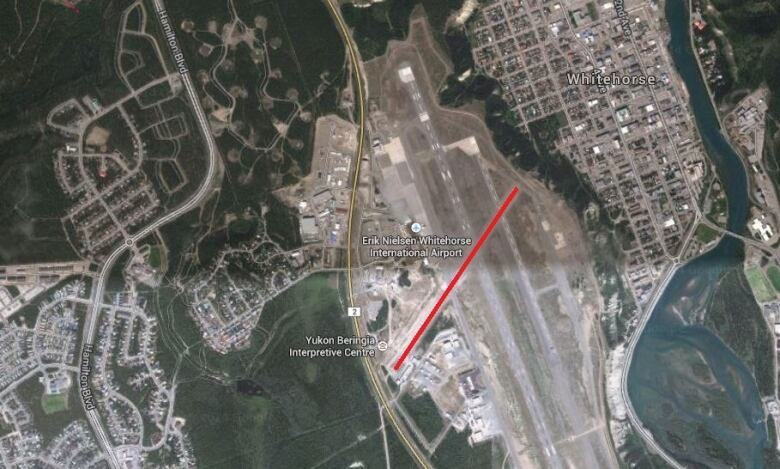Yukon pilots rally to save Runway 19
Whitehorse airport could lose small runway to commercial and hangar space

Pilots of small planes in Whitehorse are taking issue with a proposed land lease.
Yukon's department of Highways and Public Works has confirmed its considering a land lease near Runway 19 at Erik Nielsen International Airport in Whitehorse.
If approved, the lease would allow more buildings near the small runway and leave it effectively closed.
Thats a reduction of service at the Whitehorse airport,"says Jeff Faulkner, chief pilot with Alkan Air in Whitehorse. We would be losing an important safety feature.
Runway 19 is the only one at the airport that runs east-west.

"Typically the wind in Whitehorse blows north-south, up and down the valley, Faulkner says. When there is crosswind condition it blows out of the west. For the smaller airplanes, that have crosswind limits, its a big deal.
Removing 19 is going to make it harder for them to operate.
Runway 19 is a seasonal runway and its use has already been restricted for the past two years due to construction at the airport. Leasing space would make the current condition permanent.
Kendra Black, director of policy and communications for Yukon Highways and Public Works, says the government is only considering the new land lease.
She says there's no time line on the decision and added there is always demand for new hangar space.
The department provided CBC with a written statement.

Yukon's chapter of the Canadian Owner and Pilots Association recently wrote a letter to its membership discussing the issue.
The association is asking its members to send their views to Transport Canada.
"Another important point to make is the lack of a suitable alternate airport. If you choose not to land on the main runway due to crosswind and Runway 19 is closed, where do you go? The closest strips are Cousins and Carcross but if the wind is bad in (Whitehorse) it won't be better than those alternates. Of course you could still land on the infield, a taxiway or apron it, but there would be unpleasant consequences. Runway 19 has been safely used for decades and there is no reason to let this key piece of infrastructure go," wrote COPA member Christoph Altherr.
Confusing language
Pilots say their frustration isnt only with the potential closing of Runway 19.
They say the Yukon government is using confusing language to portray a closed runway as still open.

Faulkner calls this a confusing half-measure.
Usually to land on a taxiway you have to declare an emergency, he says.
He says pilots of small planes should not be forced to declare an emergency to make a safer choice.
There are some folks who are hesitant to use the word emergency because they're worried about paperwork or any other sort of reason like that. There will definitely be people who do not declare an emergency and soldier on, and use the parallel when using 19 would be more appropriate.
Faulkner says hes been looking for clarification from the Yukon government on the issue of Runway 19. Hes been unsatisfied with the response.
In any emergency the entire airport surface is usable. Basically all the rules go out the window once you declare an emergency, he says.
If its closed, nobodys going to use it
Dale Panchyshyn, president and operations manager at Nomad Air, shares the same concerns.

He says declaring an emergency and landing on a closed runway isn't something pilots take lightly, and that hesitation might cause pilots to take their chances and land in a crosswind.
"If it's closed, nobody's going to use it, he says.
Panchyshyn says he would like to see Runway 19 remain completely open as it was in years past.
"My question is, has there been a risk-assessment done?" he says."It's great to have extra hangers, but what good does it do if someone wasn't able to land safely?"
Yukon weather changes quickly
The written statement from Highways and Public Works offers pilots this advice: Pilots are encouraged to consider weather conditions and forecasts prior to taking off.
Faulkner says this doesnt account for Yukon weather.
He says its common for small planes to take off in fair conditions and return after the wind has shifted.
The longer the trip, the greater the chance that weather conditions might not be as advertised when you arrive at destination, he says.
Faulkner worries in such a case, a pilot returning to Whitehorse airport would have a tough choice: Either declare an emergency, or land in a cross-wind.












_(720p).jpg)


 OFFICIAL HD MUSIC VIDEO.jpg)
.jpg)



























































































